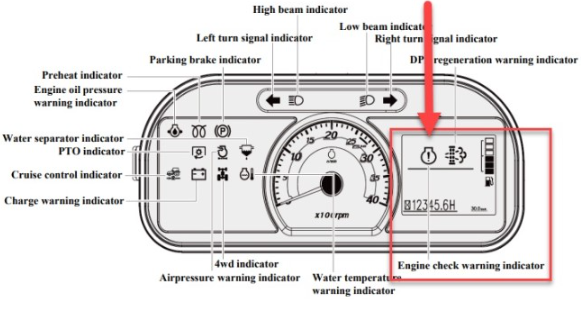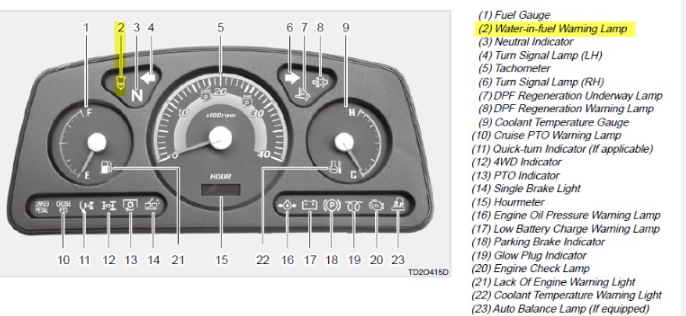Kioti Ck3510 Warning Lights can be a helpful indicator of the status of your tractor, but they can also be confusing if you don’t know what each light is trying to tell you. It’s important to be aware of what each light means and what action should be taken when one is illuminated. By understanding the Kioti Ck3510 Warning Lights, you can ensure that your tractor is running correctly and safely.
Kioti Ck3510 Warning Lights come in different colors, shapes, and sizes. The red warning light is the most common and indicates an immediate problem. A blue light means that the tractor is operating normally and a yellow light is a reminder that a service is due. If a flashing light is present, it may indicate a more serious issue, such as an overheating engine. It is important to read your tractor’s manual to determine what each warning light means and how to address it. The manual will also provide instructions on how to reset the warning lights if necessary. Knowing what each light means and how to reset them can help prevent further damage to the tractor and ensure it runs properly.
👀Look at this: Are Kioti Tractors Any Good
Understanding the Kioti Ck3510 Warning Lights

| Color | Meaning | Action |
|---|---|---|
| Red | Immediate Problem | Address immediately |
| Blue | Tractor operating normally | No action needed |
| Yellow | Service required | Schedule service |
| Flashing Light | More serious issue | Address immediately |
🚨 Red Warning Light
The red warning light is the most common and indicates an immediate problem. When the red warning light is illuminated, the driver should address the issue immediately. It is important to read the tractor’s manual to determine the exact cause of the warning light and how to address it.
💥See also: Kioti Ck3510 Problems
💡 Blue Warning Light
The blue warning light indicates that the tractor is operating normally. No action needs to be taken if the blue warning light is illuminated.
⚠️ Yellow Warning Light
The yellow warning light is a reminder that a service is due. It is important to read the tractor’s manual to determine when the service is due and what needs to be done.
🎯Suggested article: Kioti Ck2610 Problems
🔆 Flashing Warning Light
A flashing light may indicate a more serious issue, such as an overheating engine. If a flashing warning light is present, the driver should address the issue immediately. It is important to read the tractor’s manual to determine the exact cause of the warning light and how to address it. The manual will also provide instructions on how to reset the warning lights if necessary.
👀Look at this: Kioti Nx4510 Problems
